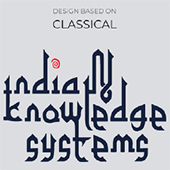Work done by experts such as Prof. Dimple Bahl highlights the importance of visual design principles and elements of ancient India, like the grid system. Unlike the static grids used in Western designs, Indian grids are more fluid and responsible for everything from the layout of temples to sari designs [8]. Indian culture is rich in examples of creative and flexible uses of the grid, be it in the yajna rituals, or the Navgraha grid depicting the nine planets [5]. Unfortunately, with the march of technology and mass production, the role of grid as a tool for enhancement of design took centre stage, leaving its depth and meaning behind. Traditional India shows that grids need not be strict and rectangular like the present, especially when one looks at examples of grids in the past, like Chakravyuha, which were modular and fluid, and served their purpose. At present, grids seem more of rigid structures which the designs serve, rather than grids serving the design. Apart from losing its flexibility, Western design also largely ignores the symbolic aspect of the grid. The grids used in the current scenario are useful and practical, but they seem to lack a unique language that makes them stand apart, to create truly indigenous design [25]. With the wealth of knowledge from Indian scriptures, change in technology, and a mix of old and new techniques, it is possible to make the grid a freely flowing design tool that omits rigidity and serves to enhance design.
Different types of grids and their components are discussed, such as the point, the axial line and the intersection (see Figure 17). Subforms of grids like coordinate-based, intersection-based, module based and line based are visually shown (see Figure 75). It is emphasised once again that the purpose is not to dwell on the religious background, but to examine those aspects of speculative thoughts which determine the core artistic principles [5].
The Indian version of the golden ratio, the 5:4 ratio, is discussed. It was first seen in ancient Indian cities, and underlines the importance of the grid in Indian history. This ratio was first witnessed in the town planning in Harappan cities in 3000 BC and found evidence in the city of Dholavira. It also emerged a thousand years later in religious texts, used for precise instructions to create altars for Vedic ceremonies.

Figure 17: Components of a grid

Figure 18: Types of grids

